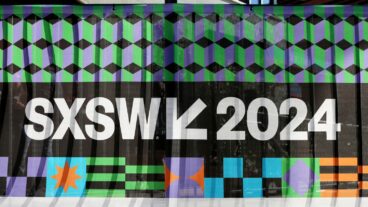Tegrity has technological agreements with dozens of US educational institutions including Tulane, Carnegie Mellon, Georgia Tech, Benedictine and Colorado Tech.The chore of studying has become easier and considerably more interesting for today’s university students thanks to innovative technologies like PowerPoint presentations and iPods.
But digital note-taking, that merges hand-written notes with multimedia presentations, promises to raise the lecture hall to a new level. And an Israeli technology is making it happen.
Tegrity Campus, a software system introduced by Yehud-based company Tegrity Inc., fine tunes the lecture note-taking experience like this: Students scrawl out their notes on special paper using Tegrity’s sensor enhanced digital pen. Simultaneously the professor’s presentation is recorded audio-visually by Tegrity system components.
After class, students can call up notes recorded by the pen’s sensors while instantaneously reviewing the lecture on archived university websites using technologically-integrated mediums.
Although the process sounds complicated, the multi-platform software enabling higher education institutions to automatically record classes across campus and deliver them online is, according to Tegrity’s Alisha Martin, fairly simple.
“Whether recording via audio, video, PowerPoint, web applications, tablet PC communications or all of the above… the software integrates seamlessly with the institution’s existing course management system so there’s no need to implement a costly new infrastructure,” Martin told ISRAEL21c.
A private company with US headquarters in Santa Clara, CA, Tegrity was founded in 1995 by a team of five engineers. Today the company houses 45 employees – 25 in the US, and 20 in Israel. While the Israel side of the company conducts R&D, the US base focuses on marketing and product placement.
With over 20 years of industry experience, the company’s President and CEO Isaac Segal has overseen product development and international marketing and sales from the company’s Israel center from the start prior to taking on his current CEO position. Segal says the note-taking technology took 15 engineers and three years to develop.
“We started as a small team… working with some fancy hardware equipment — all of which is completely irrelevant these days. The company now develops and markets enterprise software solutions,” he told ISRAEL21c.
These solutions require partnerships and the couplings are found in universities or institutes of higher learning that agree to install and incorporate the Tegrity system and pass on the aid to students. Currently Tegrity has agreements with dozens of US educational institutions including Tulane, Carnegie Mellon, Georgia Tech, Benedictine and Colorado Tech.
For an annual fee, universities buy the software and then are able to license Tegrity Campus in order to deliver it to students online. Any and every classroom on campus can be captured virtually and indexed using the university’s existing course management system so there’s no need for major investment in a technology infrastructure overhaul.
“The Tegrity Notes system is where we address how the students access class recordings. Students take handwritten notes with Tegrity’s special pen and paper notebook and later plug their pen into its loading dock and transfer their notes online where the software synchs them up with the appropriate class recording,” Segal explained.
“If they read through their digitized notes during study and come across a portion they don’t understand then can click on that part to bring up the professor explaining the concept.”
For students, the obvious advantages are more rounded classroom experiences, easy to use reference materials and a semi-tailored learning session. The fact that they can also access classes via iPod podcasts adds to the product’s allure.
“Students were ecstatic and gave glowing reviews of the online resources created with Tegrity,” claimed Benedictine University Associate Professor of Computer Science Eileen Clark.
According to educators and administrators, the technology is a promising tool for promoting enrollment, increasing graduation rates and keeping students in school because the product elevates confidence levels and fosters flexibility in learning. Test scores are also on the rise.
El Centro College Distance Education Coordinator Tuck Minnett reports that an average 2-4 point score increase was noted among students using Tegrity. The key, says Minnett, is in a student’s ability to replay class sessions as part of the test review process. If they don’t get something, they can play and re-play until it is embedded in memory.
“This improves comprehension and recall,” she said.
The bottom line is that the systems free up the learning process, allowing students to spend more time in class listening to the professor and participating in discussions because they know if notes aren’t recorded word for word, they can click on digitized notes later, synch them up with the video and hear the professor explain the concept over and over again. They don’t have to track down a professor during office hours to get extra help.
Student enrollment has also been impacted by the technology says Medical College of Georgia Director of Education Systems Management John Meyer.
“We have seen a 100% increase in student enrollment for Occupational Therapy because of the use of Tegrity,” says Meyer. “Also, Tegrity has dramatically cut the work and time involved in putting quality content online – by more than 50%.”
Plans for expansion include exploring the cellular market in the coming year, says CEO Segal. “We’re seeing some pretty impressive responses so next, we’re looking to continue exploring additional ways for delivering class instruction to students through mobile devices. That includes cell phones, planned for release later in 2006.”











